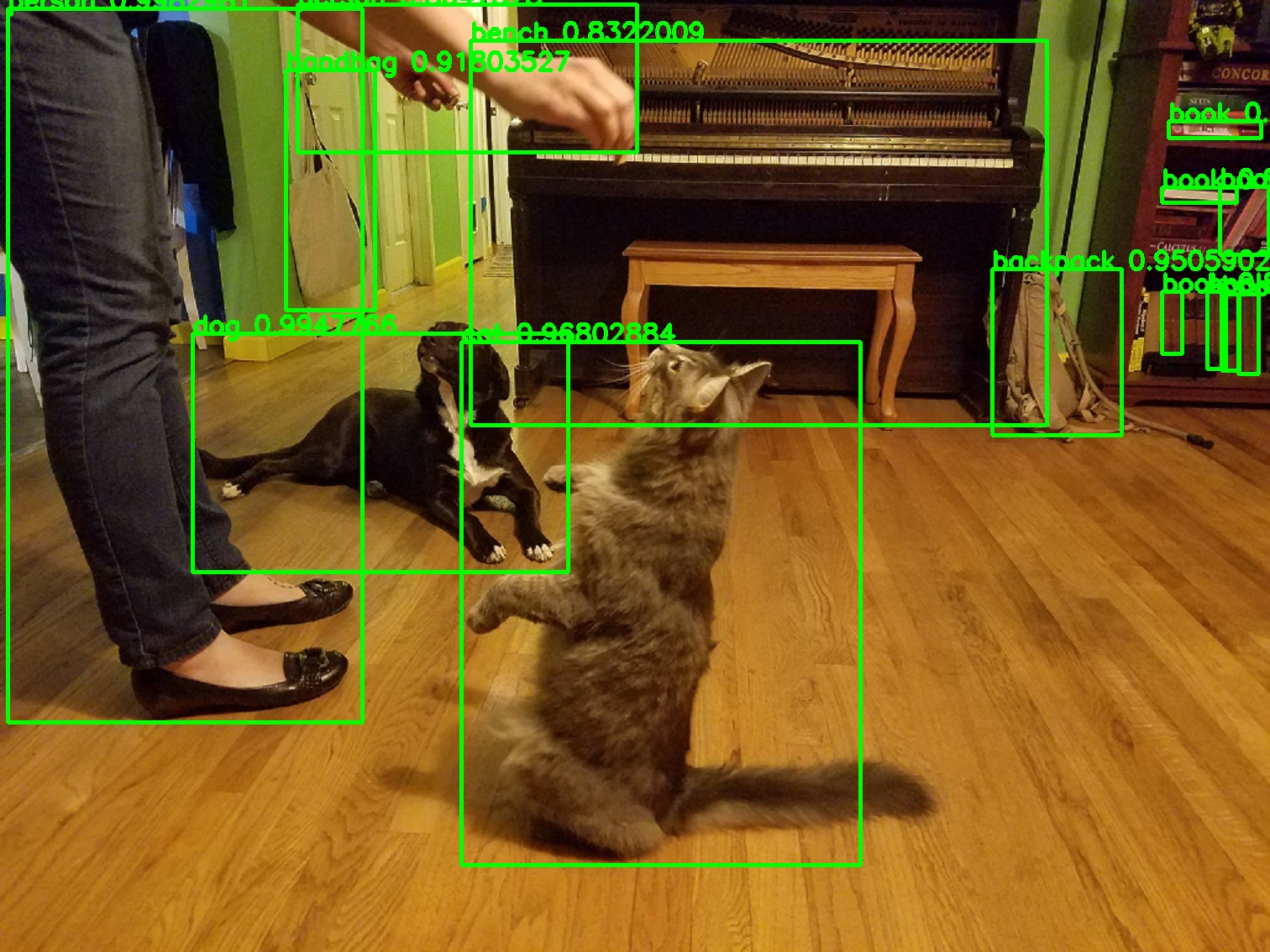Identifying and Counting Objects with Computer Vision Neural Networks
Using PyTorch’s pre-trained Faster R-CNN model, you can set up a computer vision system that quickly identifies objects in photographs. The hardest part of the process is getting PyTorch installed and configured. Installation instructions for PyTorch. The model is pre-trained using the COCO image dataset and will provide a list of bounding boxes for the objects detected, labels assigned to each bounding box, and the probability for each prediction.
Start by calling the model and setting it to evaluate.
model = torchvision.models.detection.fasterrcnn_resnet50_fpn(pretrained=True)
model.eval()
Next you need the COCO dataset labels for reference. The model will return the index number for the list.
COCO_INSTANCE_CATEGORY_NAMES = [
'__background__', 'person', 'bicycle', 'car', 'motorcycle', 'airplane', 'bus',
'train', 'truck', 'boat', 'traffic light', 'fire hydrant', 'N/A', 'stop sign',
'parking meter', 'bench', 'bird', 'cat', 'dog', 'horse', 'sheep', 'cow',
'elephant', 'bear', 'zebra', 'giraffe', 'N/A', 'backpack', 'umbrella', 'N/A', 'N/A',
'handbag', 'tie', 'suitcase', 'frisbee', 'skis', 'snowboard', 'sports ball',
'kite', 'baseball bat', 'baseball glove', 'skateboard', 'surfboard', 'tennis racket',
'bottle', 'N/A', 'wine glass', 'cup', 'fork', 'knife', 'spoon', 'bowl',
'banana', 'apple', 'sandwich', 'orange', 'broccoli', 'carrot', 'hot dog', 'pizza',
'donut', 'cake', 'chair', 'couch', 'potted plant', 'bed', 'N/A', 'dining table',
'N/A', 'N/A', 'toilet', 'N/A', 'tv', 'laptop', 'mouse', 'remote', 'keyboard', 'cell phone',
'microwave', 'oven', 'toaster', 'sink', 'refrigerator', 'N/A', 'book',
'clock', 'vase', 'scissors', 'teddy bear', 'hair drier', 'toothbrush'
]
You will need to convert your image into a tensor matrix. Here is a simple predict function that takes the path of an image and runs it through the model. The function has a threshold input which sets the minimum value for prediction.
For this function you need the following imports:
from PIL import Image
import torchvision.transforms as T
The function returns the coordinates for the bounding boxes, the labels, and a count of the objects. Counting objects in photos has many practical uses, from supply chain to monitoring traffic on a freeway.
def predict(img_path, threshold):
"""Prediction Function"""
# load image from path
image = Image.open(img_path)
# Define Tensor transfomation for Pytorch
transform = T.Compose([T.ToTensor()])
# Transform image
image = transform(image)
# Get prediction from model
pred = model([image])
# Get prediction classes
labels = list(pred[0]['labels'].numpy())
pred_class= [COCO_INSTANCE_CATEGORY_NAMES[i] for i in labels]
# Get Prediction boxes
pred_boxes = [[(i[0], i[1]), (i[2], i[3])] for i in list(pred[0]['boxes'].detach().numpy())] # Bounding boxes
pred_score = list(pred[0]['scores'].detach().numpy())
# Get indexes for predictions above the threshold
pred_t = [pred_score.index(x) for x in pred_score if x > threshold][-1] # Get list of index with score greater than threshold.
# Remove the predictions below the threshold
pred_boxes = pred_boxes[:pred_t+1]
pred_class = pred_class[:pred_t+1]
# Get object counts
obj_counts = {}
for obj in set(pred_class):
obj_counts[obj] = pred_class.count(obj)
return pred_boxes, pred_class, obj_counts
To return the image with the bounding boxes and labels, you can use the prediction function as a helper function. You will need to install and import OpenCV.
import cv2
This object detection function returns the image and a count of the objects detected.
def object_detection(img_path, threshold=0.5, rect_th=3, text_size=2, text_th=3):
"""
Main functions gets predictions and creates image.
"""
# Run prediction function to get predictions
boxes, pred_cls, object_count = predict(img_path, threshold)
# Load image using OpenCV
image = cv2.imread(img_path)
# Convert image colors to work with OpenCV
image = cv2.cvtColor(image, cv2.COLOR_BGR2RGB)
# Draw and label bounding boxes
for i in range(len(boxes)):
cv2.rectangle(image, boxes[i][0], boxes[i][1], color=(0,255,0), thickness=rect_th)
cv2.putText(image,pred_cls[i], boxes[i][0], cv2.FONT_HERSHEY_SIMPLEX, text_size, (0,255,0), thickness=text_th)
results = {}
results['image'] = image
results['object_count'] = object_count
return results
